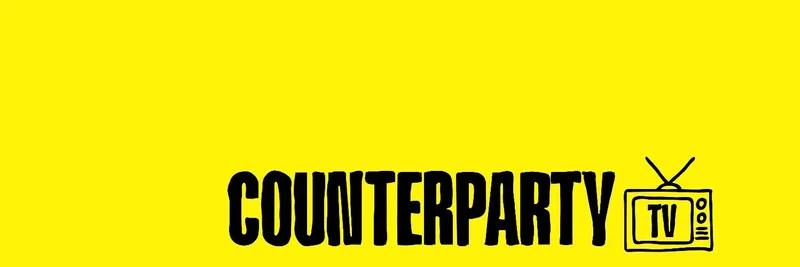In the fast-paced world of crypto, where meme tokens rise and fall like viral trends, the backbone of Ethereum often gets overlooked. But a recent tweet from crypto journalist Laura Shin has sparked a conversation that's worth paying attention to, especially if you're deep into the meme token scene. Shin shared a clip from her Unchained podcast featuring Guy Young, the founder of Ethena Labs, questioning if ETH's staking yield is overhyped. Let's break this down in simple terms and see how it ties into the broader ecosystem, including those wild meme token plays.
The Tweet That Started It All
Laura Shin, a well-known voice in crypto journalism and host of the Unchained podcast, posted on X (formerly Twitter): "💰 3% ETH staking yield sounds good… until you look at the volatility. Guy Young (@gdog97_) argues that staking returns don’t match the risk profile investors actually face." The post included a short video clip from the podcast episode, where Young dives deeper into his thoughts.
This isn't just idle chatter. Ethereum's proof-of-stake (PoS) system allows holders to stake their ETH to help secure the network and earn rewards, typically around 3% annually. But as Young points out, this yield is paid in more ETH, not in stable cash like dollars. When you factor in ETH's price swings— which can easily wipe out that 3% in a single bad day—it starts to look less appealing.
Breaking Down Guy Young's Argument
In the clip, Young explains why he thinks the yield argument for ETH doesn't hold up as strongly as some might believe. Here's the key takeaway, paraphrased for clarity:
Nominal vs. Real Yield: That 3% is "nominal," meaning it's more ETH added to your stack. But since ETH can inflate (though Ethereum burns fees to counteract this), it's not like getting a cash dividend from a stock. Young compares it to printing more of your own tokens, which any PoS chain can do. It's not "real" value creation from on-chain activity, like fees from DeFi trades or NFT mints.
Volatility Trumps Yield: ETH's price can fluctuate wildly—up 4% one day, down 5% the next. An annual 3% yield pales in comparison. As Young puts it, "It's completely inconsequential to the returns that you're going to be making over a lifetime." If you're holding ETH for its potential price appreciation, staking might be a nice bonus, but it's not the game-changer some hype it to be.
ETH ETFs and Future Staking: Young mentions that upcoming ETH ETFs might introduce staking, but even then, the economics won't change much relative to the asset's risk.
Ethena Labs, Young's project, focuses on synthetic dollars like USDe, which aims to provide stable yields backed by crypto assets. It's no surprise he's skeptical—his work is all about creating more efficient yield mechanisms in DeFi.
Community Reactions: Mixed Bag of Opinions
The tweet didn't go unnoticed, drawing replies that highlight the divide in the crypto community:
Some agreed with Young, noting that "risk-adjusted yield is the whole game" and that price swings can erase staking rewards quickly.
Others defended staking: "What volatility? 1 ETH = 1.03 ETH after a year," pointing out that if you're denominating in ETH, not dollars, the yield is straightforward.
A few took a practical stance: "Stake and HOLD. Easy." Or compared it to essential infrastructure: "ETH staking yield isn’t about getting rich overnight, it’s the base layer’s security budget."
This back-and-forth shows how staking is seen differently— as a low-risk add-on for long-term holders or a mismatched reward for volatile asset exposure.
Why This Matters for Meme Token Enthusiasts
At Meme Insider, we're all about meme tokens, those cultural phenomena built on blockchains like Ethereum. But ETH's health directly impacts the meme ecosystem:
Gas Fees and DeFi Integration: Meme tokens thrive on Ethereum's layer-2 solutions and DeFi protocols. If ETH's yield is seen as overhyped, it might shift investor focus to higher-yield DeFi plays, like liquidity pools or yield farming, where meme tokens often get paired.
Volatility Spillover: ETH's price swings affect everything on its chain. A volatile ETH can amplify meme token pumps and dumps, making staking yields even less relevant for short-term traders chasing 10x gains.
Alternative Yields in Meme World: Projects like Ethena's USDe offer stable yields that could appeal to meme token holders looking to park profits without ETH's risks. Imagine earning on your meme gains without worrying about ETH crashing.
If Young's view gains traction, it could encourage more innovation in yield-generating protocols, benefiting meme token liquidity and trading strategies.
Wrapping Up: Hype or Substance?
Guy Young's take on ETH yield being overhyped isn't a dismissal of Ethereum—it's a call for realistic expectations. Staking provides network security and a modest return, but in a market defined by volatility, it's not the killer feature. For meme token players, this discussion underscores the need to diversify yields and understand risks beyond the headlines.
If you're intrigued, check out the full Unchained podcast episode for more depth. And stay tuned to Meme Insider for how these big-picture debates play out in the meme token space. What's your take— is ETH staking worth it, or overhyped? Drop your thoughts in the comments!
For more on Ethereum and DeFi, explore our knowledge base at meme-insider.com/deFi-guides.




